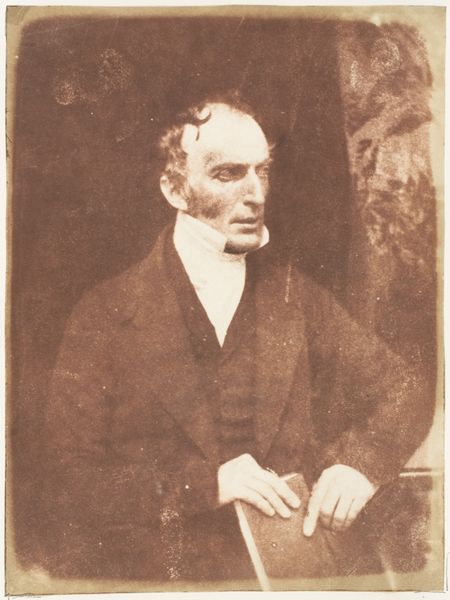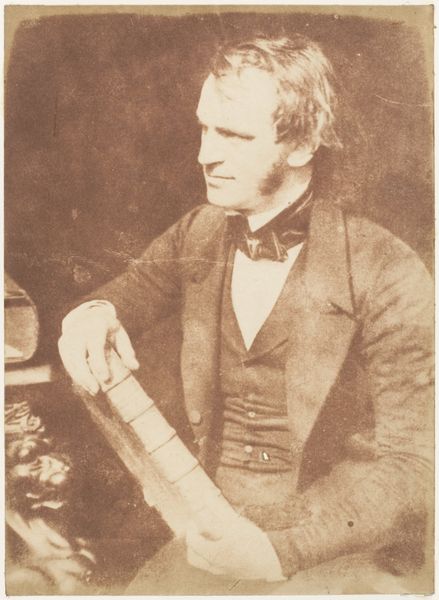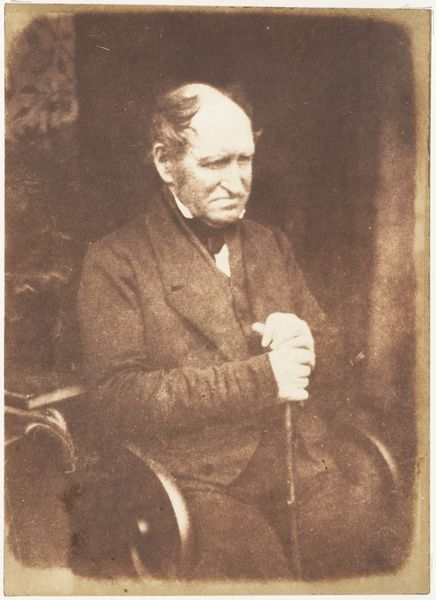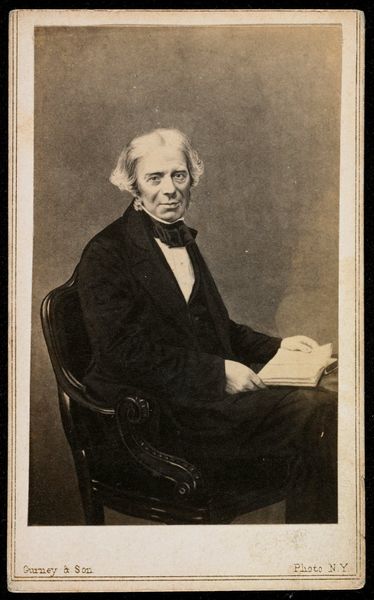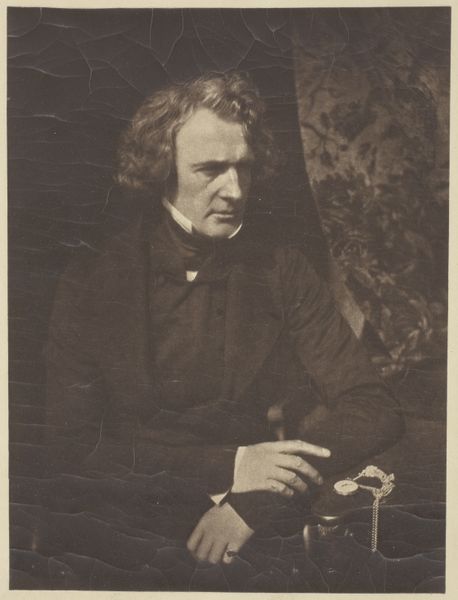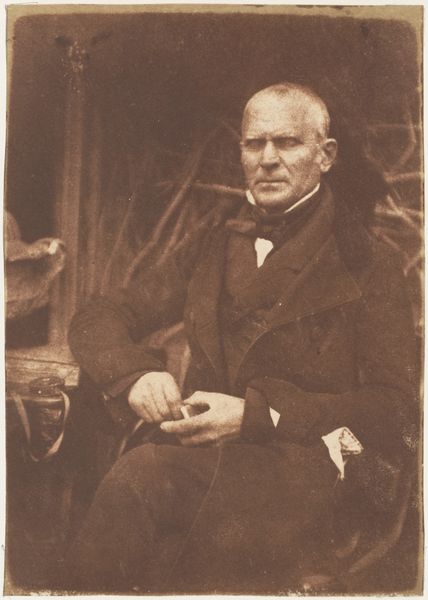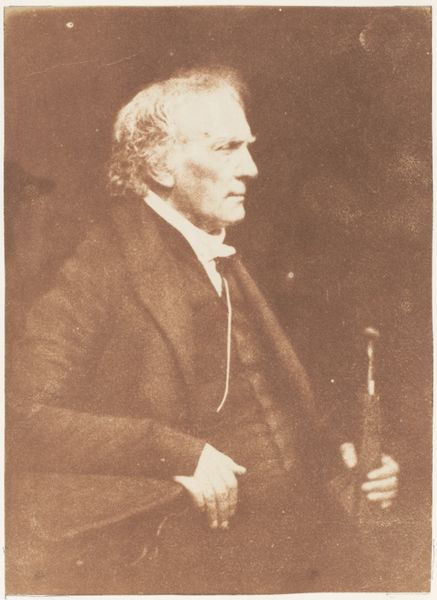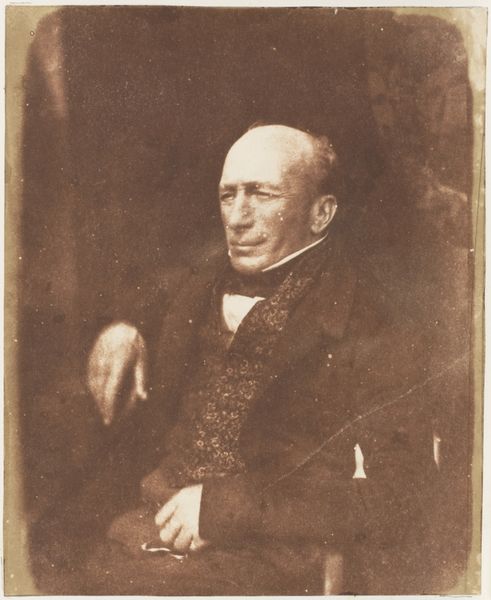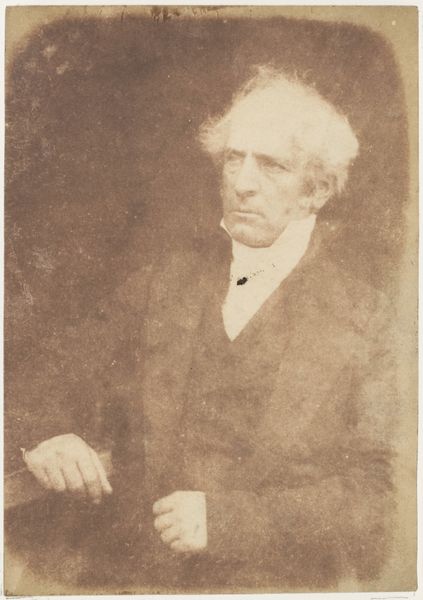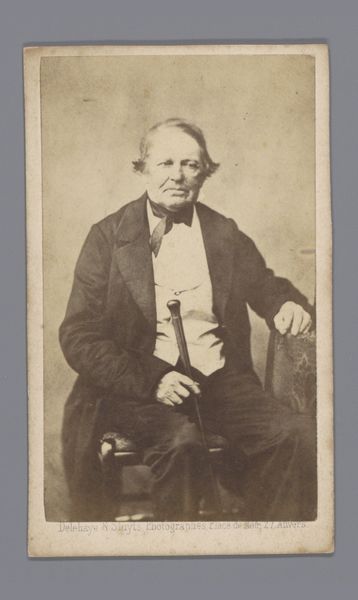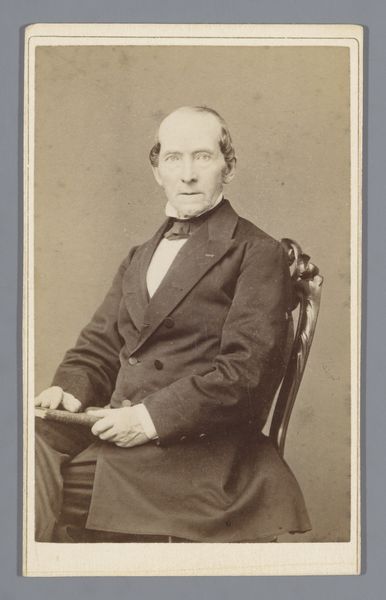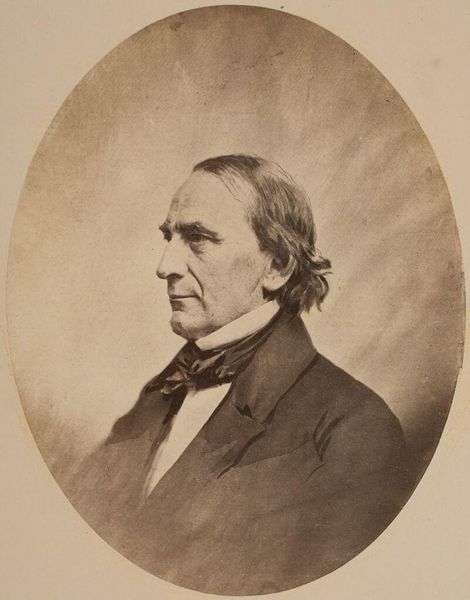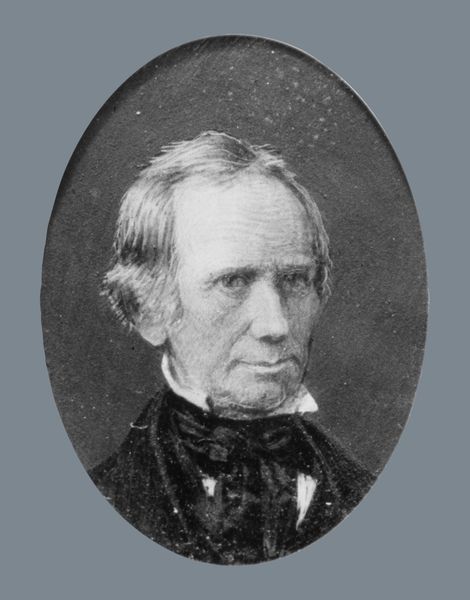
#
portrait
#
photo restoration
#
book
#
charcoal drawing
#
charcoal art
#
portrait reference
#
pencil drawing
#
men
#
animal drawing portrait
#
portrait drawing
#
portrait art
#
fine art portrait
#
digital portrait
Copyright: Public Domain
Curator: Here we have the striking portrait "Sir Charles Lyell - Geologist" by Hill and Adamson, created between 1843 and 1847. It’s currently housed at the Metropolitan Museum of Art. Editor: My initial impression is one of stillness, a kind of captured moment of intellectual contemplation, the sepia tones adding to this sense of suspended time. You can almost feel the weight of the paper it’s printed on and the labor behind the collodion process. Curator: Absolutely. Lyell, holding a book, is cast as the archetypal Victorian intellectual. The book is both a tool of his trade and a symbol of enlightenment, and the composition evokes a profound sense of legacy and the enduring power of knowledge. Editor: It’s also remarkable how this image straddles art and science. Photography was still so new then; each print was practically hand-crafted, relying heavily on material processes. It reminds you that knowledge isn’t just abstract but comes from tangible work and specific historical conditions. Curator: The light and shadow also play a crucial symbolic role. The illumination focuses our attention on his face, hinting at the visionary intellect, while the shadows around him add an aura of mystery and complexity. The face possesses a stern nobility. Editor: Right, it speaks to the economic conditions of artistic production too. Think about how photographers were then trying to carve out a space for themselves against traditional portrait painters. These images became objects to trade. They had real social impact. Curator: Consider too the layers of symbolism tied to geology itself at the time, about the very earth we tread on. This wasn't merely about a scientist; it was a visual assertion of evolving scientific thought during a period of intense intellectual ferment. Editor: Yes, it gives me a sense of art as not only capturing reality, but actively participating in its production, from the chemicals to the circulation of prints. A real, historical document, a material encounter from the nineteenth century! Curator: Examining "Sir Charles Lyell" shows us the subject, yes, but through symbolism and shadow, light and learning, reveals enduring notions about knowledge, authority, and scientific revolution itself. Editor: Agreed, thinking about the physical print really roots the image in its historical context, reminding us of how deeply entwined art is with material, social, and economic forces.
Comments
No comments
Be the first to comment and join the conversation on the ultimate creative platform.

